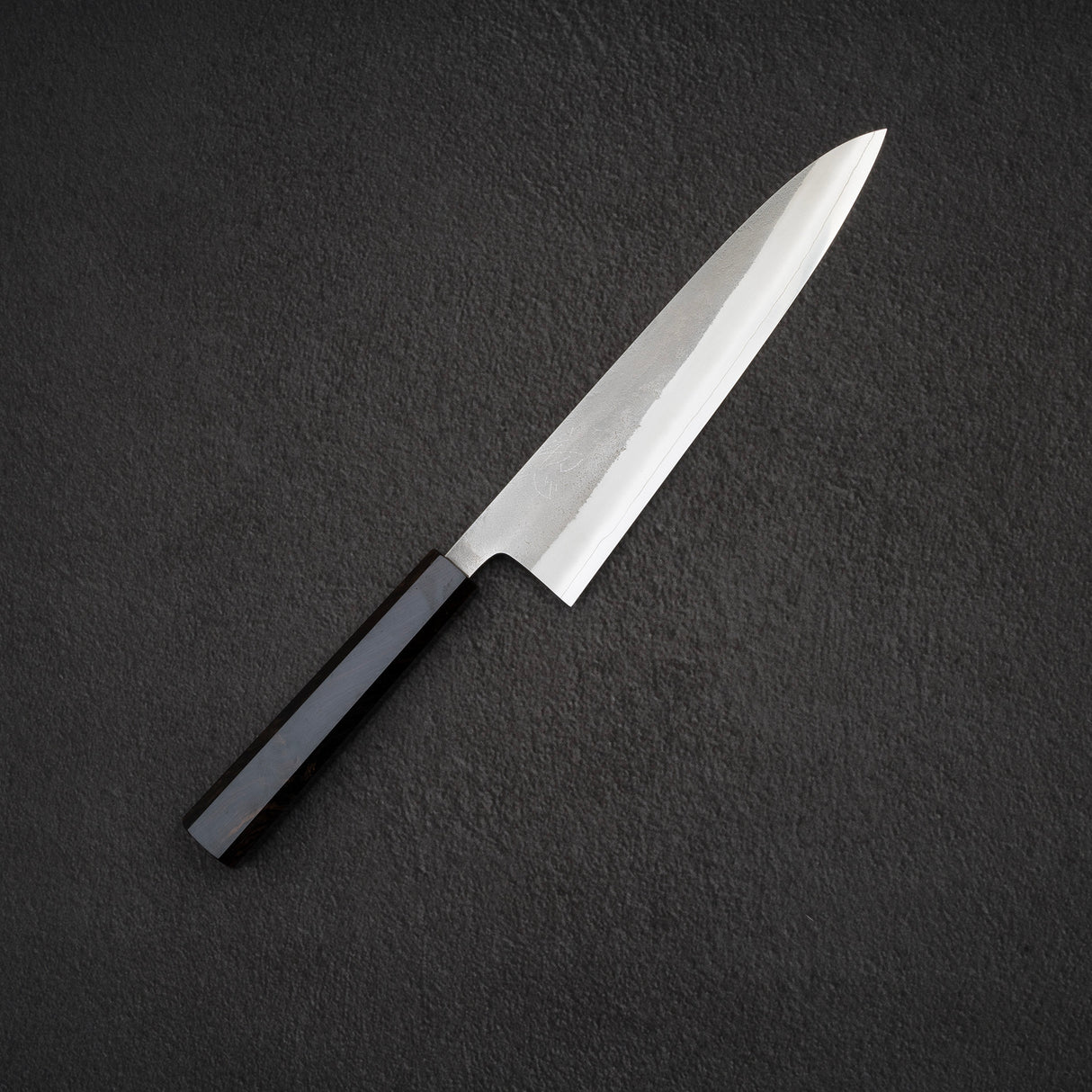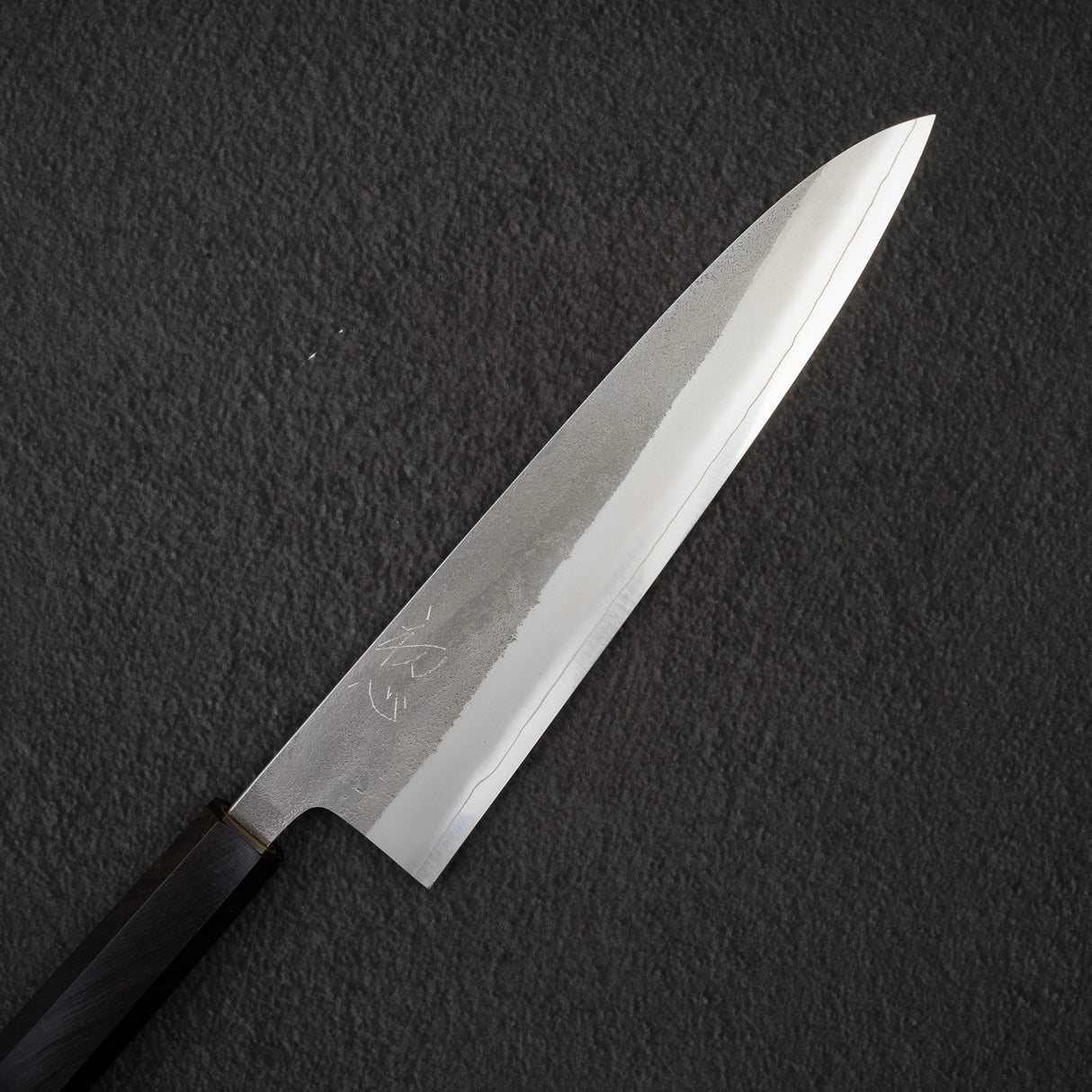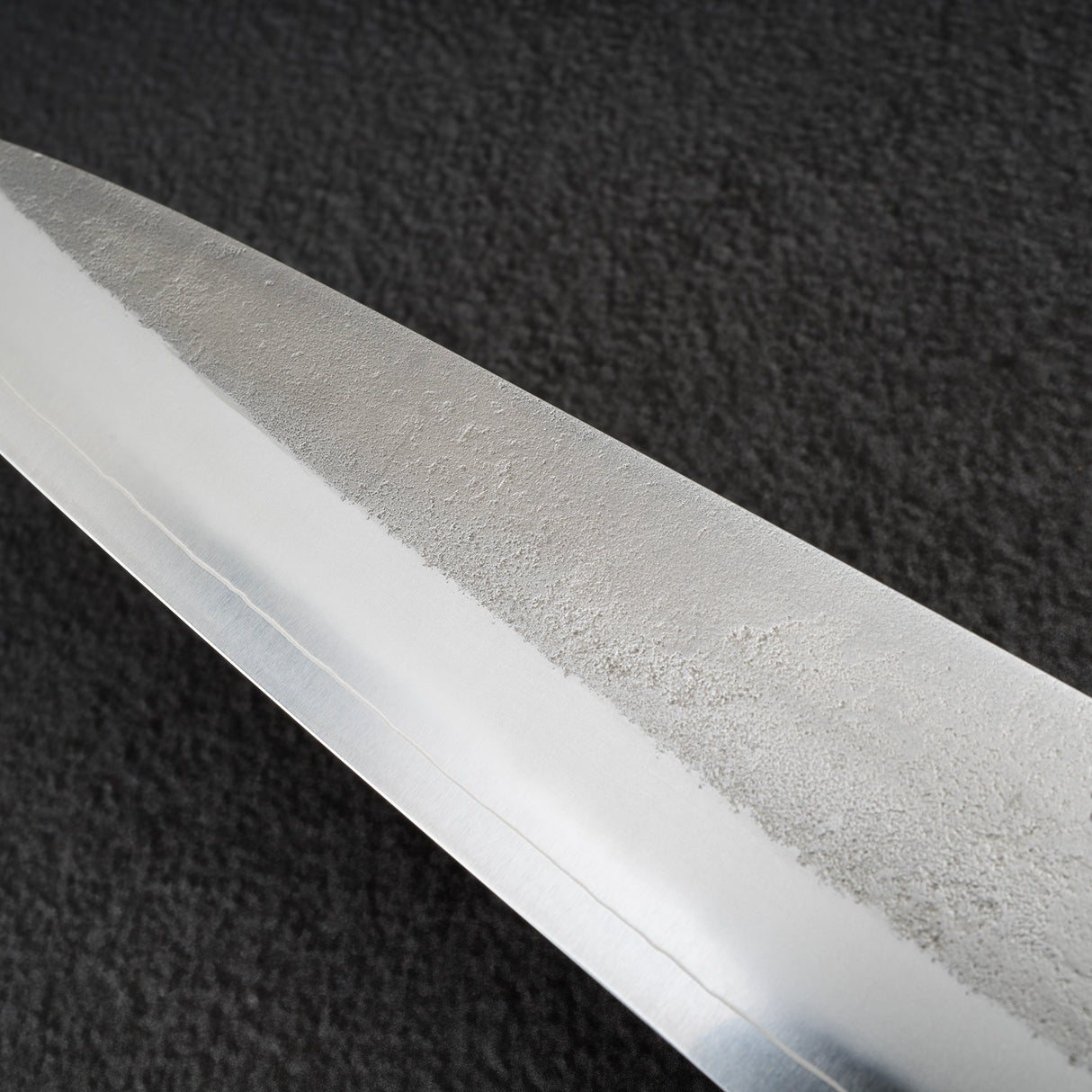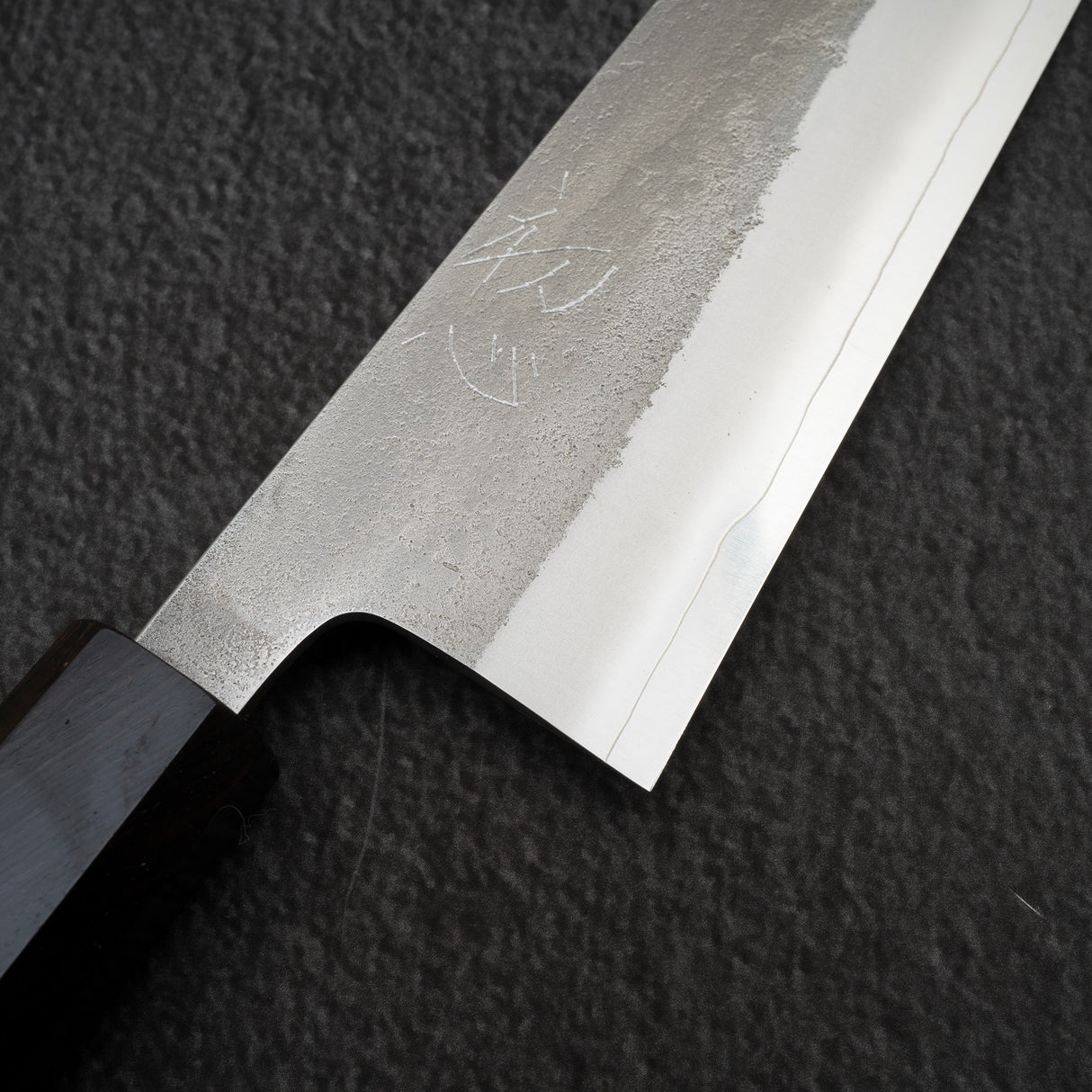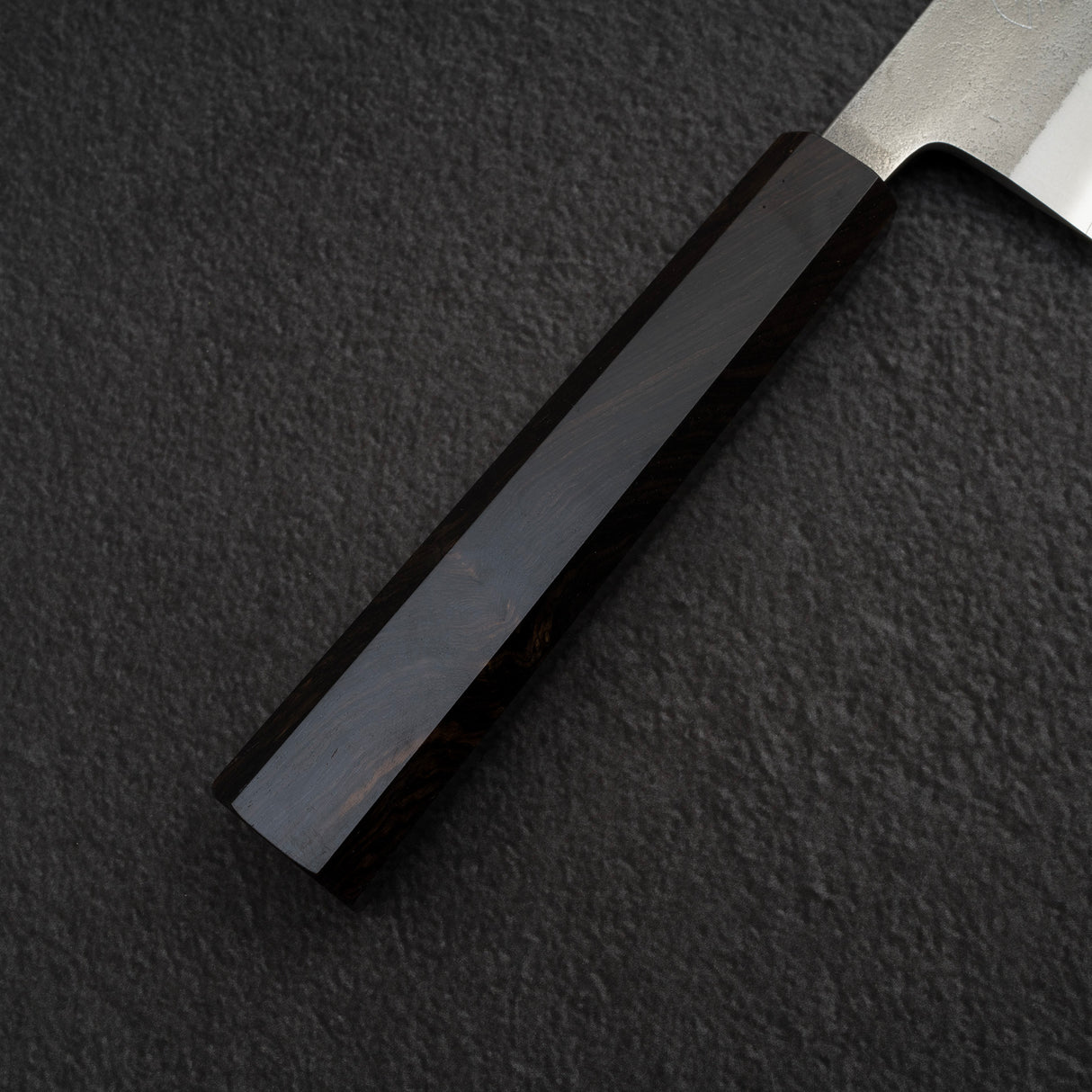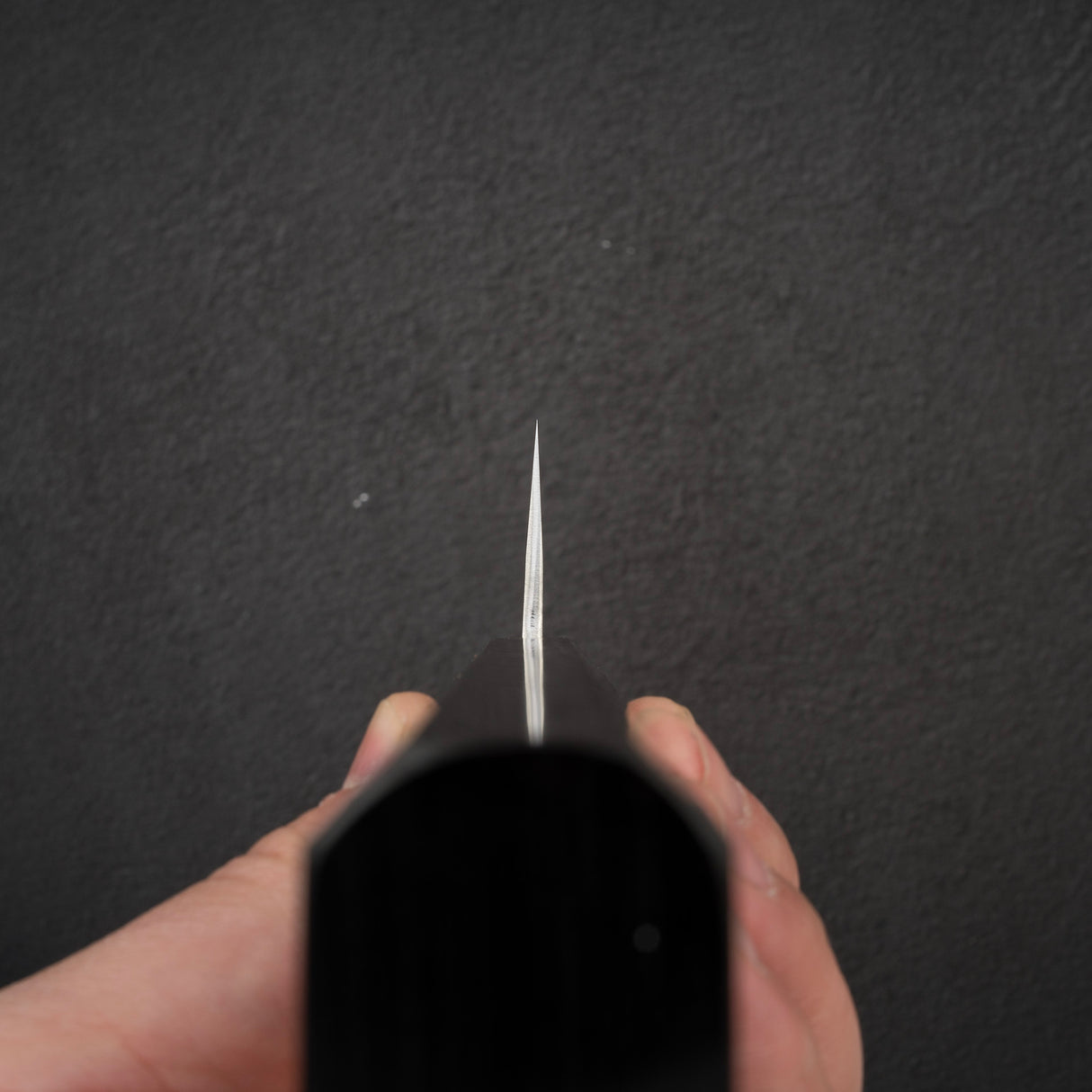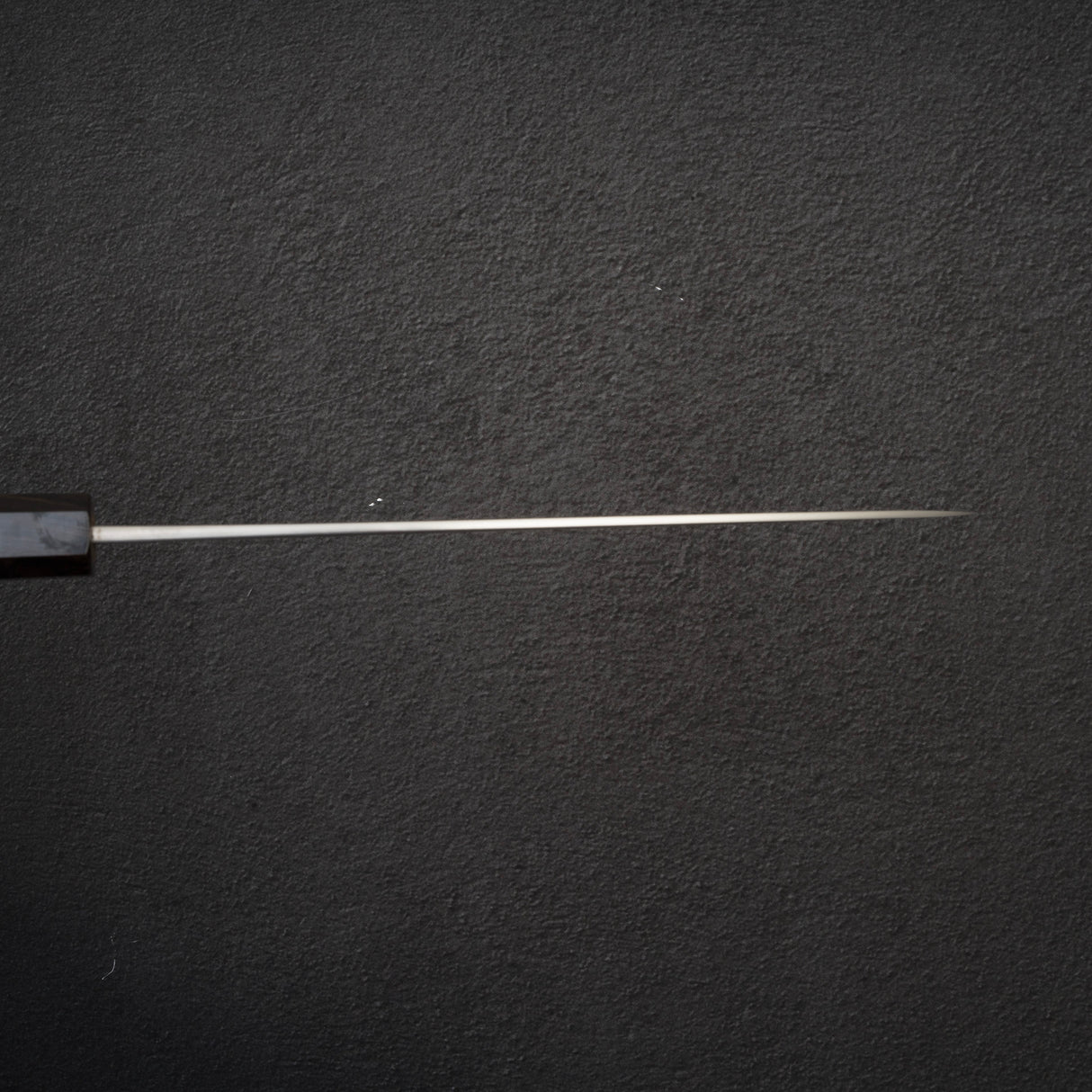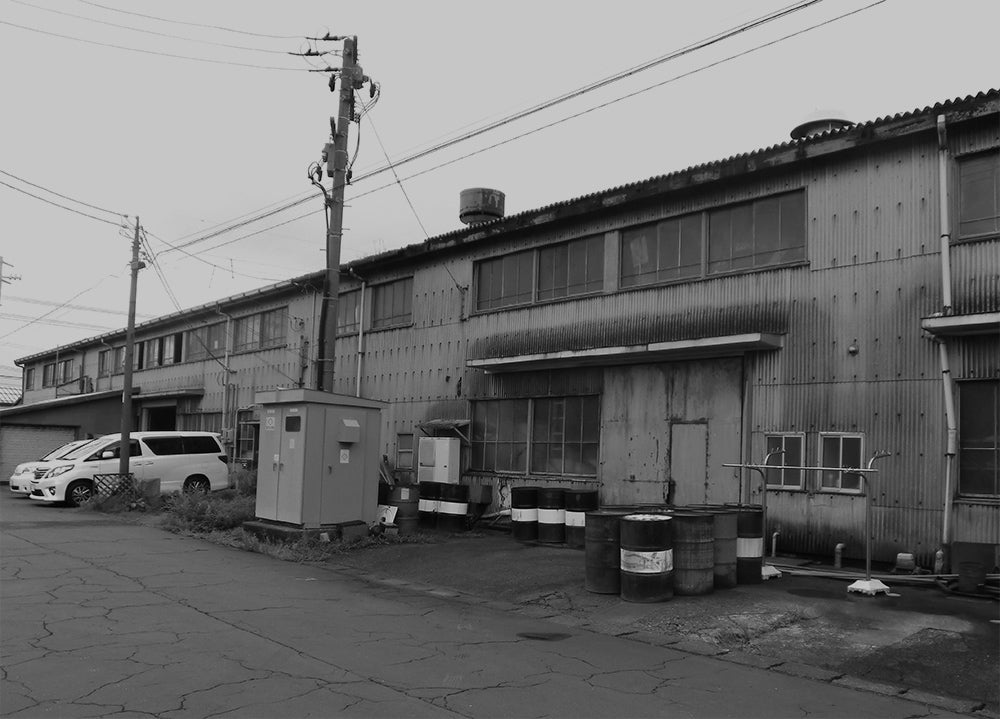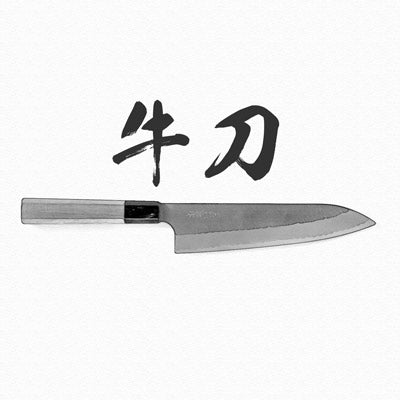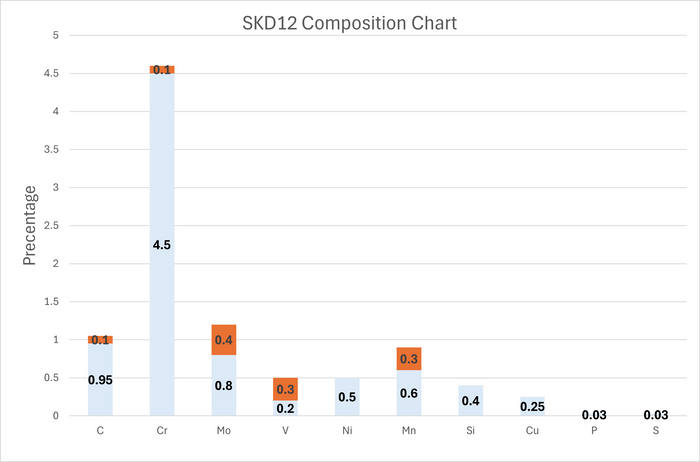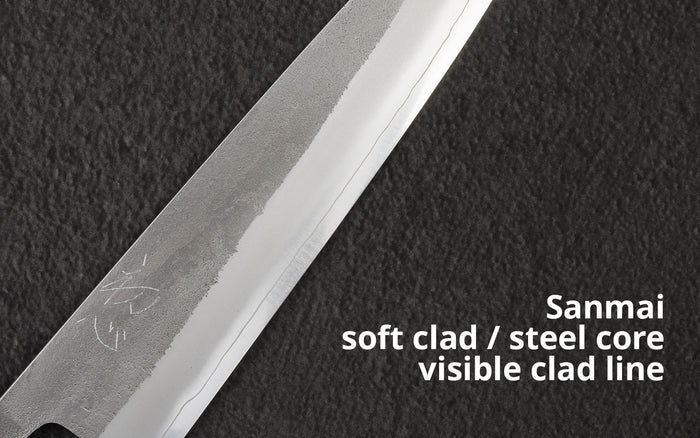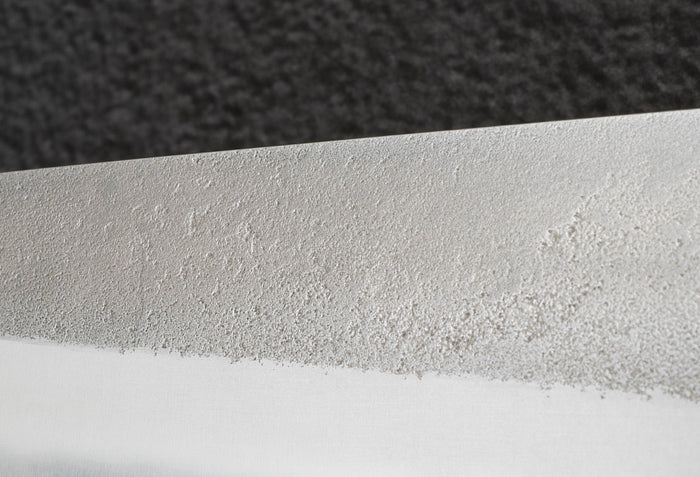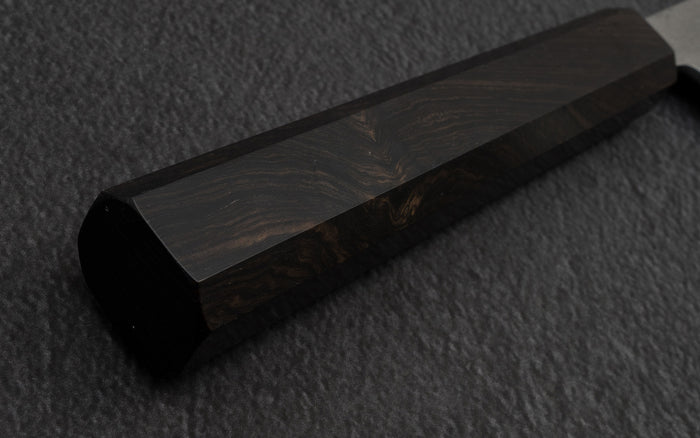Hatsuokokoro x Yoshikane SKD Nashiji Gyuto 210mm Ebony Handle
Hatsuokokoro x Yoshikane SKD Nashiji Gyuto 210mm Ebony Handle is backordered and will ship as soon as it is back in stock.
Couldn't load pickup availability
Detailed Specifications
| Line | Hatsukokoro By Yoshikane SKD Nashiji |
| Profile | Gyuto / Chefs Knife |
| Bevel Type | Double Bevel |
| Weight | 166 g 5.86 oz |
| Edge Length | 213 mm .8.39 inch |
| Heel Height | 43 mm .1.69 inch |
| Width @ Spine | 4.0 mm 0.16 inch |
| Width @ Mid | 2.0 mm 0.08 inch |
| Width @ 1cm from Tip | 0.8 mm 0.03 inch |
| Steel | SKD | Semi-stainless |
| Blade Construction | Sanmai - Stainless Clad |
| Hardness (HRC) | 62 - 64 |
| Surface Finish | Nashiji |
| Handle | Octagonal Ebony |
| Region | Sanjo |
| Best for |
|

Video Review
| Pros | Cons |
|
|
|
Care Instruction
- Don't cut hard things! Japanese knives are brittle so bone hacking is a NO NO!
- Wash with neutral detergent after use, and wipe dry;
- Please don't wash knife with dishwasher, it will damage the wood handle;
- Be careful not to leave the knife close to a heat source for a long time;
- It is a lot more dangerous to cut with a blunt knife than a sharp knife!
- It is best to sharpen a Japanese knife regularly on a waterstone.
- Semi-stainless steel won't rust easily but may still patina

